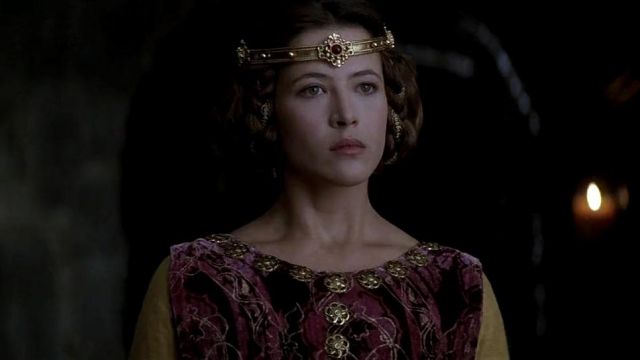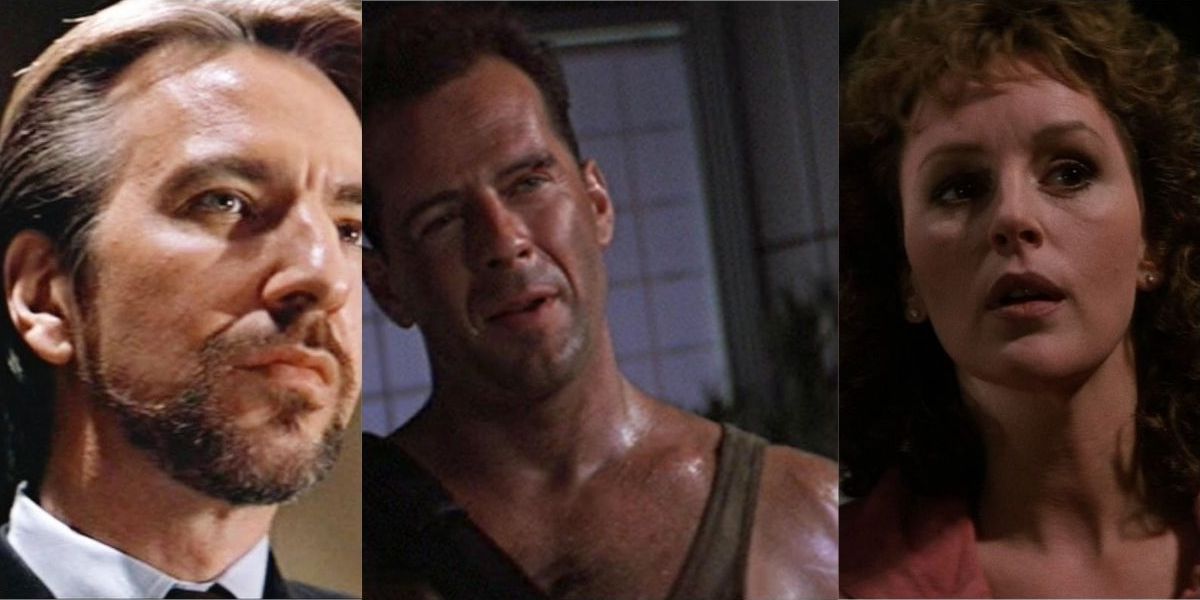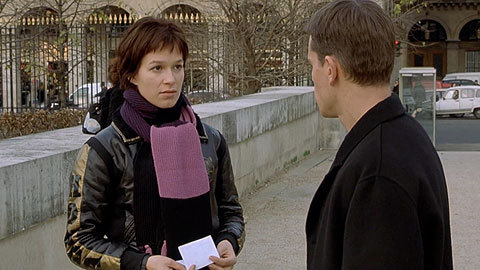In my previous two articles, I examined the use of “relational arcs” (not “subplots”) in Raiders of the Lost Ark and The Matrix. I used these two films for illustration because they contained, in my words, “simple and straight-forward” plots. I say simple and straight-forward because the narrative discourse of both films maintains a singular focus: everything is about the protagonist and his Story Spine. Every plot point in Raiders is about Indy’s pursuit of the Ark. Every plot point in The Matrix is about Neo’s journey to becoming the “One.” There is rarely a scene in either film which does not feature the protagonist; and when there is such a scene, it is brief and acts for the propose of complicating some elements of the protagonist’s Spine (complicating the main source of conflict, the stakes, the protagonist’s path of action...). When you boil it all down, the movie’s discourse is all about one person striving to achieve one thing. Everything else exists to either assist or oppose that person’s efforts.
But what do we find when we consider movies with a more “sophisticated” narrative discourse? To figure this out, let us look at The Bourne Identity, a movie with a middling discursive complexity.
The protagonist of The Bourne Identity is, of course, Jason Bourne. Bourne’s Spine is clear: His Story Problem is that, as an amnesiac, he has lost all memory of his past as a CIA assassin. His Story Goal, therefore, is to recover the knowledge of his past so he may resolve all the chaos that past now inflicts upon him. If The Bourne Identity focused solely on the hero’s line of action in the same manner as Raiders or The Matrix, we would have a functional, self-contained, and entertaining narrative. That is, a good movie in its own right. However, the discourse repeatedly cuts away to a second narrative line which does not feature Jason Bourne. In fact, this line of narrative takes place thousands of miles away from Bourne in the CIA offices of Langley, Virginia.
Here, Ted Conklin is the center of the narrative universe. Conklin takes his own independent actions in pursuit of his own objectives, and faces his own conflicts as a result. To Conklin, Bourne’s actions in Europe are only a nuisance and obstacle to Conklin’s own objectives; an obstacle which must be eliminated before Conklin’s goals can be reached. Meanwhile, the discourse occasionally interjects a third line of narrative, this one with deposed dictator Wombosi as its lead. Like Conklin in the second line, Wombosi is in charge of the narrative here (neither Bourne nor Conklin make an appearance), as Wombosi takes his own, independent actions toward his own objective: blackmailing the CIA by threatening to expose an assassination attempt.
So, we have three lines of narrative within a single movie story. Does this mean that Bourne’s line is the main plotline while Conklin and Wombosi’s are mere subplots (or the B-Story and C-Story, respectively)? No, they are not. The Bourne, Conklin, and Wombosi lines are three quasi-autonomous, yet interdependent story threads which, when intertwined, constitute the story discourse of The Bourne Identity as a whole.*
(*There is also a potential fourth line, that of Paris CIA operative Nicki (Julia Stiles). However, Nicki’s dramatic function is limited to carrying out Conklin’s orders, and she never pursues objectives of her own. As such, Nicki’s line may be considered as a simple extension of Conklin’s line.)
What do I mean by “story threads”? Well, if we take a simple movie narrative like Raiders of the Lost Ark, the structural composition can be likened to a length of cord: a single piece of material stretching from the beginning of the story discourse to its end. (Sure, this cord is “thickened” in various places by the unfolding of relational arcs, but it is still of one piece.) Now, a more complicated narrative discourse, like that found in Bourne, is more like a rope. A rope is created by tightly intertwining numerous individual threads. This intertwining of threads makes a rope stronger than a cord; and, likewise, the intertwining of story threads gives a movie narrative greater complexity and sophistication than one which focuses on a single line of action.
Let's use a second film for
further illustration: Braveheart
(1995). In Braveheart,
we may clearly discern four distinct story threads. The first belongs
to William Wallace (Mel Gibson) as Wallace leads a Scottish rebellion
against the English.
The second thread belongs to King Edward “Longshanks.” The focus of this thread is the King’s efforts to maintain tyrannical authority over his empire; a goal which concerns not only the Scottish rebellion, but other matters such as the King’s conflict with France and his relationship with his weak and ineffectual heir, the Prince.
The Princess Isabelle is given a third thread. The focus of this thread is more personal than geopolitical: Though smart and resourceful in the realm of politics, Isabelle strives to overcome the alienation and lack of regard she suffers in the court of King Edward.
Finally, a fourth story thread belongs to Robert the Bruce. Robert the Bruce’s overall goal is to manage the politics amongst the Scottish nobles, and between Scotland and England, with the ultimate aim of acquiring the Scottish crown.
If one would chop up Braveheart to watch only those scenes involving each of these four characters, all in turn, in isolation, each thread will be found to be quasi-autonomous in nature. By this I mean each of the four characters acts as the protagonist of their own narrative line. In that line, the character takes independent action in pursuit of their own objectives, objectives which may or may not bear relations to the objectives of the other “protagonists.” As such, each of the four story threads could make a perfectly suitable movie story in their own right. That is, the storytellers could have potentially eliminated the other story threads to made that one “protagonist” Braveheart’s the sole focus in the manner of Raiders or The Matrix.
However, these story threads are only quasi-autonomous. In terms of the overall story discourse, story threads do not have complete autonomy. Though story threads develop separately, their mutual development is interconnected and interdependent upon events contained in the other threads. This is what is meant when we say that threads are intertwined. At times, the threads may directly intersect, bringing two or more of the “protagonists” face-to-face: Wallace’s thread routinely intersects with Robert the Bruce’s thread; Isabelle’s thread intersects at various points with those of King Edward and Wallace. Robert the Bruce’s thread even briefly intersects with King Edward. In these moments of intersection, dramatic outcomes create potential turning points for both story threads.
Story threads also affect one another indirectly, meaning that actions taken in one thread may alter the circumstances of other threads. The best example is the indirect interaction between the Wallace and King Edward threads. Though the two characters never meet face-to-face, every major action taken by Wallace alters King Edward’s circumstances in such a way that forces a response from King Edward. Likewise, every major action taken by King Edward alters the circumstances of the Wallace thread.
As a result, Braveheart does not present four separate stories, but a single story discourse composed of four interconnected threads. Braveheart is not William Wallace’s story, nor King Edward’s story, nor Princess Isabelle’s story, nor Robert the Bruce’s story, but a multi-thread narrative composition which ultimately presents a story experience greater than the sum of its parts. Braveheart is an example of plural, rather than singular, storytelling.*
(* Plural, multi-thread storytelling, however, should not be confused with true multi-narrative films like Magnolia (1999), Crash (2004), or Babel (2006) (often referred to as “ensemble” films). Produced far more rarely, multi-narrative films present several COMPLETELY autonomous narratives with few or no causal connections between them. Often, the only connections between the narratives are coincidental or rooted in a shared theme. Multi-narrative films thus present several independent stories within a single movie, whereas plural multi-thread storytelling presents a single, unified story composed of multiple interconnected character threads.)
Plural, multi-thread storytelling is rarely mentioned in the various “how-to” materials on screenwriting. This is because beginners are taught to think simple. The concept of “story” is presented in the singular: one main character, one line of action, one central conflict, one resolution. Yet in reality, what we experience as the “Story” of a movie is the entirety of its discourse, which may contain as few or as many story threads as the storyteller desires. Films such as Braveheart and The Bourne Identity thus present a higher level of storytelling sophistication than movies like Raiders or The Matrix, a level to which students of screenwriting may aspire after they have grasped the fundamentals of storytelling in the singular.
How many story threads can a single movie contain? Well, let’s look at one of the most surprisingly-complex popular movie narratives: Die Hard.
Let’s count the story threads in Die Hard. First, of course, we have our hero John McClane. John’s goal is get himself and all hostages out of Nakatomi Tower alive. Next, the villain Hans Gruber. Hans wants to steal the millions of dollars of bonds in Nakatomi’s safe. Meanwhile, outside the Tower, we have Sgt. Al Powell desperately trying to keep his incompetent superior Lt. Robinson from turning the situation into a bloodbath. But wait, that’s not all. Holly takes on a leader role among the hostages. Henchman Karl is out for revenge. TV reporter Dick Thornburg pursues a potentially career-making news story. Ellis tries to be the hero in his own way and pays the price. FBI Agents Johnson & Johnson take over to shoot first and ask questions later. Argyle is trapped in the parking garage.
In Die Hard, practically every significant character is granted their own personal story thread. This surprising complexity of discourse is one reason why Die Hard's success has never been duplicated by its many imitators. Die Hard is not just a story about John McClane, or of a clash between a hero and a villain. Its “story” is the sum of all of its threads, their individual moments along with their interactions and intersections, with each thread contributing pieces to the overall story discourse.
The important point here is that story threads are NOT “subplots.” Each thread is not “sub” to anything. They are quasi-autonomous, each holding the potential of being a stand-alone narrative in their own right. Argyle’s thread is his own story. As are Holly’s, Karl’s, or Dick Thornberg’s.
But wait, you may be thinking, if story threads belonging to “secondary” characters are not subordinate to the central protagonist’s thread, does this not imply that all story threads are of equal importance? That, in Die Hard, Argyle’s thread should be considered equal to John McClane’s thread; or in The Bourne Identity, Wombosi’s thread be equal to Jason Bourne’s thread; even though the narrative discourse gives them far less time and attention? Well, the answer is yes and no. To understand, we must return to the distinction between fabula and syuzhet.
As explained in the first article of this series, the fabula of Die Hard contains every moment experienced by the characters of every story thread, from the beginning of the story’s timeframe to its end—whether it happens to be featured on screen or not. The fabula includes, for instance; every little thing Argyle does while waiting in the parking garage; every single thing Dick Thornburg does before, during, and after the moments we see him on screen; every little detail of John, Holly, or Hans’ experiences, seen or unseen. As the reservoir of all potential story material, the fabula considers every event, action, or piece of information as more or less equal.
The syuzhet, on the other hand, is the end result of all conscious decisions made by the storyteller regarding what fabula material to present, and when to present it, in the construction of the overall narrative discourse. In Die Hard, this includes every choice regarding when to stick with John’s thread, when to cut to Hans, and what (for instance) is important from the Holly and Karl threads and when to interject that material. As a result of these choices, vast portions of the fabula are omitted; either because the storyteller deems them unimportant, or for the sake of generating mystery, surprise, or suspense. In the process of making such choices, certain story threads become more prominent within the discourse (John, Hans, Sgt. Powell), while others are limited to bits and pieces (Argyle, Thornburg, Ellis). As such, the perception of Die Hard as the story of John versus Hans with occasional “subplots” involving “secondary” characters is merely an illusion of the syuzhet. The storytellers simply chose to make certain story threads more prominent than others. If the storytellers wished, they could have constructed a different syuzhet where Holly, Karl, or Thornburg’s thread becomes most prominent, causing those characters to appear as the “central” protagonist.
But, we can complexify things even further. In the previous two articles of this series, I introduced the concept of relational arcs, as seen in single-thread narratives like Raiders of the Lost Ark and The Matrix. Relational arcs are also quite common in multi-thread narratives. These arcs tends to develop in one of two ways.
In the first case, a relational arc forms in the same manner previously identified in Raiders and The Matrix. To review, a relational arc “unfolds” an existing character relationship already integral to the functioning of the plot. The only difference with multi-thread narratives is that this “unfolding” occurs between two characters with a plot-functional relationship isolated within only ONE of the several threads. We find two clear examples in The Bourne Identity. In the Jason Bourne thread, the plot-functional partnership between Bourne and Marie is given greater depth as it unfolds into a romantic arc. In the Ted Conklin thread, the perfunctory chain-of-command between Conklin and his supervisor Ward Abbot is unfolded into an interpersonal conflict based on their clashing philosophies and institutional priorities. These relational arcs are “isolated” within their respective threads in the sense that they are relevant only to that particular thread and have virtually no effect upon any other thread.
A second form of relational arc develops between story threads. This occurs when two threads intersect or overlap with such frequency that a progressing inter-personal relationship forms between the threads’ “lead” characters. In Braveheart, for example, Princess Isabelle’s thread intersects with Wallace’s thread with increasing frequency over the second half of the narrative to the point where they ultimately overlap. As a result of their compatible desires and interests, Isabelle and Wallace’s interactions become a progressing relationship, resulting in a romantic arc.
We also find two clear examples in Die Hard. The first is between John and Holly. John and Holly’s threads overlap entirely during the film’s opening setup sequence. In fact, the troubled relationship between John and Holly is used as the film’s primary source of drama until the inciting incident occurs. When John and Holly are separated by the inciting incident, their relational arc is left to linger, but is resolved when their threads finally reunite at the movie’s end. A second inter-thread relational arc forms between the John and Sgt. Powell threads. Though the two threads are geographically separated (John is trapped inside the building, Powell stuck outside the building), there is enough interaction between John and Powell that a plot-significant relationship forms. Since the desires and interests of the two parties are closely aligned (both want to see the situation resolved without the loss of innocent lives) an informal partnership, or “buddy” relational arc forms between the two otherwise separate threads, complete with structural moments of initiation, development, and resolution.
To conclude, the past three articles have examined two common intra-narrative structures frequently mislabeled as “subplots”: relational arcs, and story threads found in narratives of plural construction. In the next installment, we shall explore two more narrational structures often misconstrued as “subplots”: prologue and epilogue sequences. Then, in my concluding article, we will finally define examples of true “subplots.”










No comments:
Post a Comment